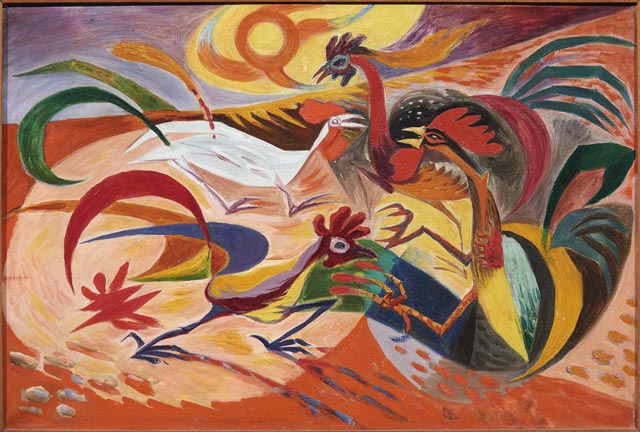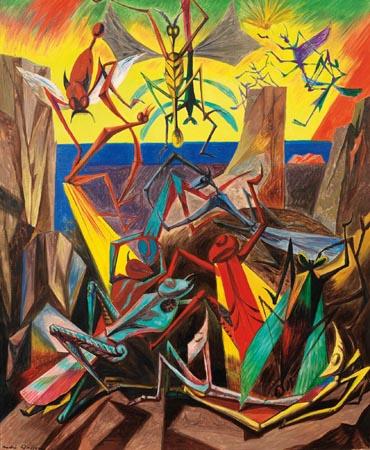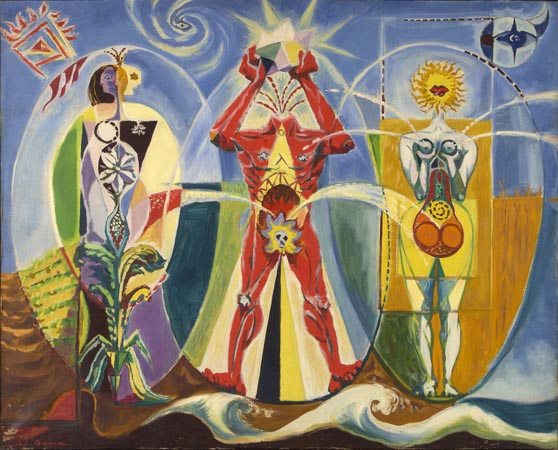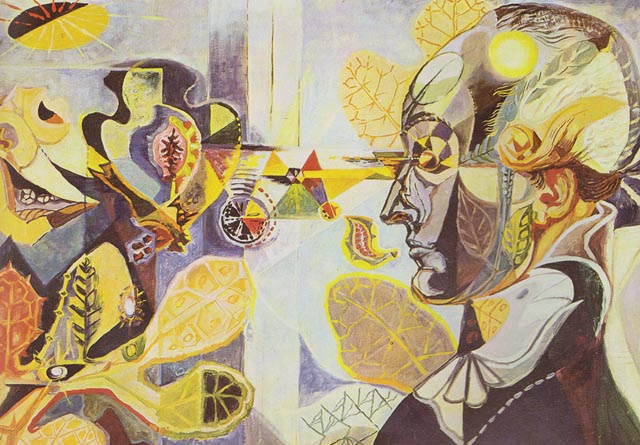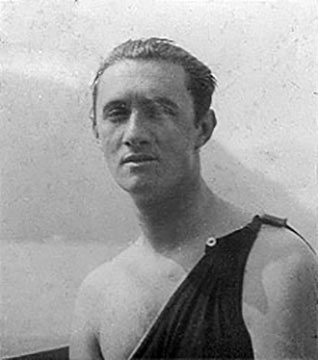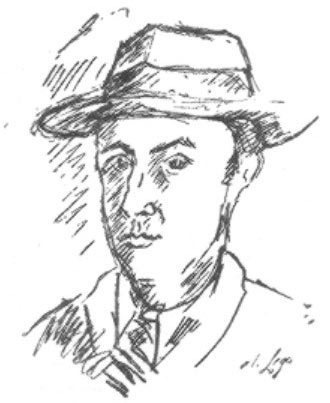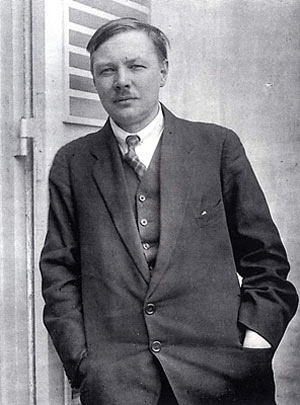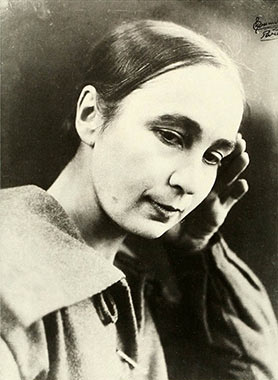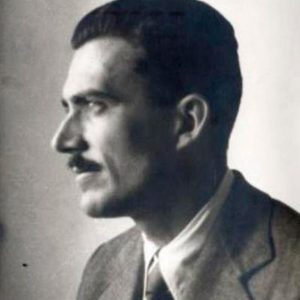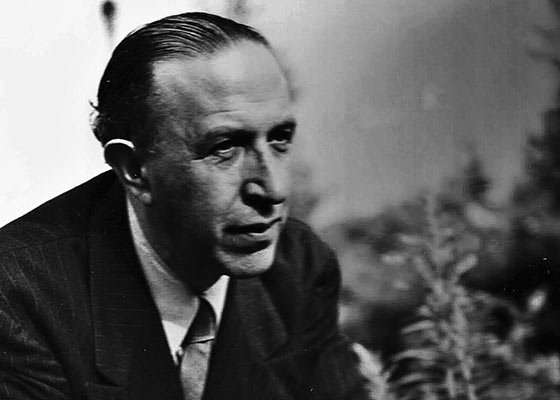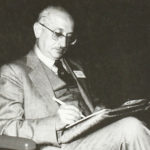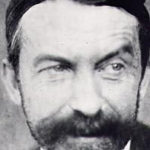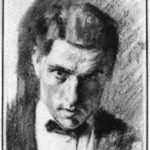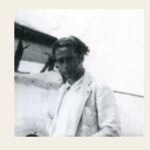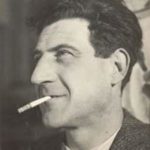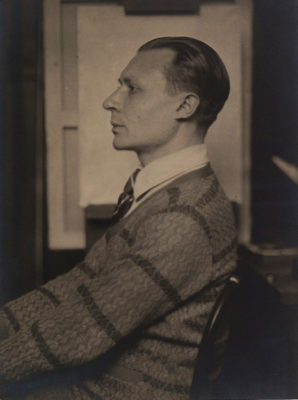
Masson André
(French)
L’artiste peintre français André Masson naît le 4 janvier 1896 à Balagny-sur-Thérain, village industriel de l’Oise, de parents d’origine paysanne. Il décède le 28 octobre 1987 à Paris.
A partir de 1907, André Masson étudie à l’Académie Royale des Beaux-Arts et Arts Décoratifs de Bruxelles. Il s’inscrit ensuite à l’École Nationale des Beaux-Arts de Paris en 1912.
André Masson pratique un cubisme très personnel dès la fin de la première guerre mondiale, au cours de laquelle il est grièvement blessé au Chemin des Dames.
Son atelier de la rue Blomet, où se rencontrent notamment Roland Tual, Antonin Artaud, Georges Limbour, Michel Leiris, Georges Bataille, Louis Aragon et André Breton, se révèle être un des lieux de formation du Surréalisme et un foyer de dissidence.
Daniel Henry-Kahnweiler devient son marchand et grâce à lui, André Masson peut, dès 1922, se consacrer entièrement à la peinture.
Masson qui se considère comme un surréaliste de naissance adhère au mouvement en 1923. En 1927, il pratique pour la première fois l’automatisme sur une toile en projetant du sable sur une couche de colle.
Fasciné par l’Espagne et ses paysages, il s’y exile volontairement de 1933 à 1936. Il collabore à la revue surréaliste “Minotaure” et fonde avec Bataille la revue “Acéphale” en 1936.
En 1941, la famille Masson s’embarque avec Breton et quelques autres surréalistes aux Etats-Unis, via La Martinique où elle reste jusqu’en octobre 1945. Elle s’installe en Nouvelle Angleterre et a pour voisins Alexander Calder, Yves Tanguy et Arshile Gorky.
La peinture de Masson inspire les jeunes expressionnistes abstraits américains et plus particulièrement Jackson Pollock.
En 1947, l’artiste déménage au Tholonnet près d’Aix en Provence. Il connaît une période d’apaisement qui se ressent dans sa peinture et se tourne vers des peintres comme Renoir et la peinture chinoise.
En 1965, Malraux lui confie le décor du plafond du théâtre de l’Odéon, tandis que la même année une rétrospective au Musée national d’art moderne consacre son oeuvre.
(English)
André-Aimé-René Masson (4 January 1896 – 28 October 1987) was a French artist. His early works display an interest in cubism. He later became associated with surrealism, and he was one of the most enthusiastic employers of automatic drawing, making a number of automatic works in pen and ink. Masson experimented with altered states of consciousness with artists such as Antonin Artaud, Michel Leiris, Joan Miró, Georges Bataille, Jean Dubuffet, and Georges Malkine, who were neighbors of his studio in Paris.
From around 1926 he experimented by throwing sand and glue onto canvas and making oil paintings based around the shapes that formed. By the end of the 1920s, however, he was finding automatic drawing rather restricting, and he left the surrealist movement and turned instead to a more structured style, often producing works with a violent or erotic theme, and making a number of paintings in reaction to the Spanish Civil War (he associated once more with the surrealists at the end of the 1930s).
Under the German occupation of France during World War II, his work was condemned by the Nazis as degenerate. With the assistance of Varian Fry in Marseille, Masson escaped the Nazi regime on a ship to the French island of Martinique from where he went on to the United States. Upon arrival in New York City, U.S. customs officials inspecting Masson’s luggage found a cache of his erotic drawings. Living in New Preston, Connecticut his work became an important influence on American abstract expressionists, such as Jackson Pollock. Following the war, he returned to France and settled in Aix-en-Provence where he painted a number of landscapes.
Masson drew the cover of the first issue of Georges Bataille’s review, Acéphale, in 1936, and participated in all its issues until 1939. His brother-in-law, the psychoanalyst Jacques Lacan, was the last private owner of Gustave Courbet’s provocative painting L’Origine du monde (The Origin of the World); Lacan asked Masson to paint a surrealist variant.
